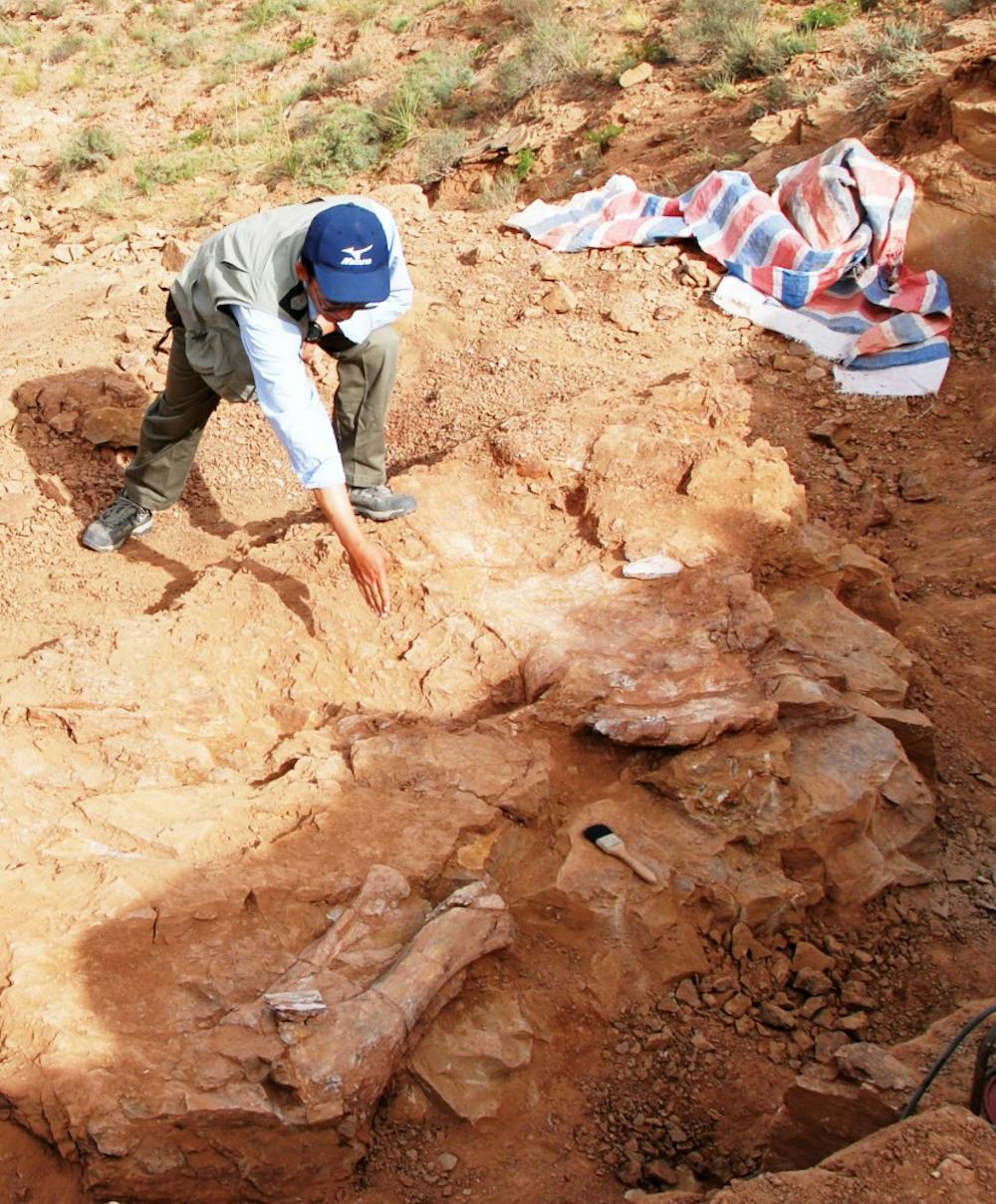
A team led by two Penn paleontologists has classified a new species of dinosaur named Yongjinglong datangi by examining 14 fossils found at an excavation site in northwestern China.
Dinosaurs are far from dead for researchers on Penn’s campus.
A team led by two Penn paleontologists has classified a new species of dinosaur named Yongjinglong datangi by examining 14 fossils found at an excavation site in northwestern China.
The uncovered fossils — which include eight vertebrae, three teeth, a left shoulder blade and two right arm bones — indicate that this dinosaur was probably 50 to 60 feet long and still growing.
The new species is part of a group of plant-eating dinosaurs called the Titanosaurs, which were so large that they were named after the mythological Titans. Some other species in this group weighed almost 200,000 pounds.
The fossils, originally found in 2008, were preserved until the paleontology team examined them. The team first compared their remains to the fossils of two other Titanosaurs that were discovered just a mile away from the excavation site. The fossils of the Yonjinglong had many differing features, the paleontologists explained.
Liguo Li, a doctoral student in Earth and Environmental Science, was first asked to examine the left shoulder blade. “I was the first person to touch this bone professionally. I remember I stood by the side of the table and I told [another researcher], ‘Look at the coracoid foramen! It’s unique!’”
Most dinosaur shoulder blades bow outward, Li explained, but this shoulder blade was long and skinny, a feature that helped identify the Yongjinglong as a separate species. The many unique features of the species are outlined in the team’s journal article, which was published in the Public Library of Science at the end of January.
The new species shares more similarities with the later Titanosaurs that were found in South America than the older Titanosaurs found in China, leading researchers to believe that the Yongjinglong lived during the Early Cretaceous period, which was more than 100 million years ago.
“That’s a rather exciting finding,” said team member Peter Dodson, professor of animal biology at the School of Veterinary Medicine. Dodson has an ancient frog species, Nezpercius dodsoni, named after him. “There’s just an avalanche of new discoveries in China.”
China has had a long history of dinosaur discoveries, Dodson explained. For decades, villagers in central China dug up dinosaur bones that they thought belonged to flying dragons and would use them in traditional medicines by boiling or grinding them. “Dragon bones” were still sold for 25 cents a pound in the Henan province of China in 2006.
While the United States has been the center of dinosaur discoveries for decades, as of 2007 there have been more dinosaur species found in China than anywhere else in the world, which has to do with increasing enthusiasm and new technology, Li explained.
Brandon Hedrick, a doctoral student in the Penn Department of Earth and Environmental Science who has worked with Dodson in China classifying dinosaurs, has used new techniques like 3D morphometrics and histology to closely examine fossil remains.
In histology, which might be used pinpoint the age of the Yongjinglong, the dinosaur bone is cut up and examined under a microscope.
“Many of the structures are actually still preserved — a lot of the bone cells and growth structures that the dinosaur had when it was alive” remain after it fossilizes, Hedrick explained. “This gives you a much better idea of where this animal was in its growth.”
Even though dinosaurs have been studied for centuries, there is still much that science is trying to figure out, the researchers agreed.
“There are 40 to 50 new dinosaur species found every year across the globe,” Dodson said. “We’re still at less than the halfway point of discoveries.”
The Daily Pennsylvanian is an independent, student-run newspaper. Please consider making a donation to support the coverage that shapes the University. Your generosity ensures a future of strong journalism at Penn.
DonatePlease note All comments are eligible for publication in The Daily Pennsylvanian.







